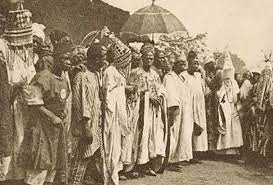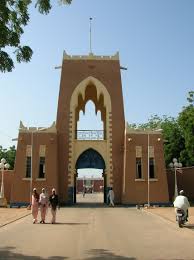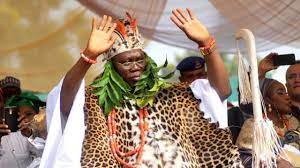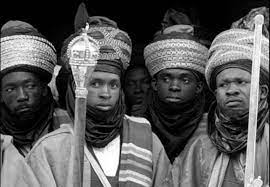
The Yoruba people can be classified as a Niger-Congo group and are mainly located in the southwestern part of Nigeria. You can also find them in the north-central part of Nigeria.
They spread as far as the old Midwestern state of Nigeria and have a good number in Edo state. There are even indications that people of the delta state are related to the Yorubas. The entire region is covered by the Yorubas is termed as Yorubaland.
There are about 50 million Yorubas in Nigeria today, thereby making up about 21% of Nigeria’s population. This means that the Yorubas are among the most populous in Africa.
The Yoruba language is tonal and it is considered as the Niger-Congo language with the highest number of native speakers.
The Yorubas are neighbors to the Itsekiris located in the southeastern part of Nigeria, as well as, the North West Niger delta. They are also neighbors to the Barnabas in the northwest.
The Nupes are equally neighbors to the Yorubas in the north and the Ebiras are their neighbors to the northeast. The Afemais, Esans, and Edos are located to the eastern borders of the Yoruba people. The Yoruba tribe is well represented in several other African countries, including Sierra Leone, Liberia, Ivory Coast, and Ghana.
There are two main groups among Yoruba Diaspora; they are the recent migrants and the other is the group taken as slaves in the pre-colonial era.
The first group moved to the united states and united kingdom following the major political and economic changes of 1960 to 1980, while the second group was taken as slaves abroad and now forms communities in places like Trinidad and Tobago, Grenada, Brazil, Jamaica, Saint Lucia, Venezuela, Dominican Republic, Puerto Rico, and Cuba.
The Yoruba pre-colonial political system
The pre-colonial period refers to the time before the British invaded Yoruba land. The Yoruba kingdom was orderly and its political system was unified. Thankfully, the Yoruba kingdom has its headquarters in Oyo Town and administers the other towns and villages spread across the entire kingdom.
Oyo kingdom represents the central authority, while the other towns stand as subordinate units.
There are also some other central cities within the kingdom, which are headed by Kings and the kinds also administer the villages under them, which are headed by Baales (local chiefs). The obas (kings) have their chiefs, same with the Baales. The Baale is expected to report to the King regularly also.
He is expected to forward Isakole (tax) to the Oba every year. The Baales are appointed by the Oba and he could relieve any of the Baale’s of his position if the Baale failed to pay the annual Isakole. While the king can remove the Baale, he must seek the consent of his chiefs.
Checks and balances
The pre-colonial administration was successful because power was decentralized with authority being shared among sections and levels of the kingdom. There is equally a check and balance principle put in place to checkmate the excesses of some traditional leaders, irrespective of their level of authority.
In the Oyo Kingdom, for example, the Oyomesi is made up of 7 kingmakers with the Bashorun as their head, while the Aare Ona Kakanfo is the head of the Yoruba army. These two groups of people can checkmate the excesses of the Alaafin to make sure that he does things right at all times.
All that is needed to depose an errant Alaafin is to present him with a parrot egg or an empty calabash if he is ever found guilty of any impeachable crime or incompetence. According to history, Alaafin Aole was presented with such an empty calabash by Aare Afonja with support from some members of the Oyomesi, which indicated his rejection as Alaafin and the latter committed suicide upon receiving the empty calabash.
A closer look at what happens in Nigeria today will show a semblance between the current system of government in Nigeria and what was obtained in the pre-colonial Yoruba kingdom.
The pre-colonial political structure in Yoruba land
The Oba is the political head of the Yoruba people in any town or city. He has the council of chiefs to assist him, which is made up of Otun, Osi, Iyalode, Iyaloja, and so on.
There is also the Afobaje’s (Kingmakers), whose sole responsibility it is to select the new king and they do this in line with what culture demands. There are the Baales, who are heads of the smaller towns and communities.
There is also the Esos (The army). The religious cult equally plays a role in the administration of the Yoruba nation.
Each of the obas in different towns has his specific title. For example, the oba of Oyo is the Alaafin; the Oba of Ile Ife is the Ooni; the Oba of Ado-Ekiti is the Ewi; that of Ibadan is Olubadan; the Oba of Oshogbo is Ata-Oja; that of Abeokuta is Ake.
Some other ones are highlighted below:
- Soun of Ogbomoso
- Elekole of Ikole-Ekiti
- Awujale of Ijebu Ode
- Timi of Ede
- Aremo or Remo land
- etc
While the kingmakers in Oyo are called Oyomesi, those in Ijebu land are called Osugbo.
Selection of a new king
The kingmakers are responsible for selecting a new king. Bear in mind that kingship is not necessarily hierarchical in Yorubaland. This means that an Aremo (prince) is not necessarily the one to replace a king upon the king’s demise.
An Aremo can assist the king in running the affairs of the kingdom; this does not qualify him to become the next king. Upon the demise of the king, the kingmakers will be the ones to decide the household that is to present the next king.
Bear in mind that kingship usually rotates among several households and they take a turn in providing the next king.
In a situation whereby several individuals from the same household are qualified, the religious cult will work together with the kingmakers to determine who is to be the next king among them.
The Oyo political system is the most popular among all the political systems existing in Yorubaland. It is even powerful enough to influence what goes on in virtually all other Yoruba kingdoms.






















